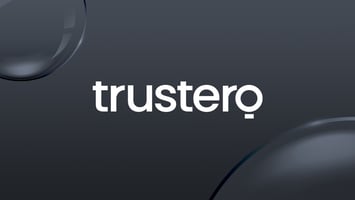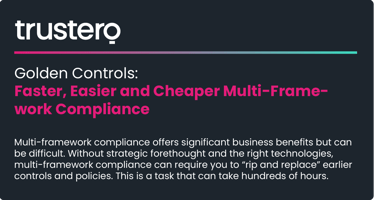To comply with SOC 2, ISO 27001 or other frameworks, you need to show you are implementing the...
SOC 2 Compliance: 6 Steps to a Perfect Audit with Trustero
A SOC 2 audit can take months and cost tens of thousands of dollars. Here are six steps you can take to maximize the likelihood of passing that audit successfully and begin moving toward the multiple business benefits of continuous compliance.
Step 1: establish scope. Write out a brief description of your business from a compliance perspective. What does your company do? Where are there intrinsic risks of mishandling customer information or being compromised by a bad actor?
An audit examines some of your business, but not everything. First, figure out which policies, procedures, people, and IT will matter for this audit. Then, with your auditor’s help, you need to determine what to include and what not to have to prepare successfully for what is to follow. The illustration below offers some examples.
Scoping, or defining what your audit will examine, starts with a description of your business, focused on the information your auditor will need to address what your company does. If you’re using one, you should also indicate the cloud services you use and set up integrations for your compliance automation solution. These steps will help automate the evidence gathering, monitoring, and testing necessary to complete your audit and move you closer to continuous compliance.
Step 2: develop and capture your policies. Policies provide specific information about how you perform the tasks that run your business. Policies also provide the links between your business operations and the relevant SOC 2 controls. Trustero Compliance as a Service includes auditor-approved templates to help ease and speed this task. In addition, your auditor can provide additional guidance.
Step 3: align your policies with the right controls. Controls are the specific measures you take to comply with elements of the SOC 2 framework. As shown in the illustration below, controls basically enforce your policies in ways that get and keep you compliant.
The core of your auditor’s eventual SOC 2 report will be what you really do, as measured by specific controls and how they hold up to testing. In order to address a risk, you’ll need a policy supported by specific controls. The auditor will check that those controls are functioning and report their testing results, as shown in the example below.
Step 4: identify and capture evidence of compliance with each control. Evidence proves that your business is “walking the talk” regarding SOC 2 compliance. That evidence comes in a variety of forms, as illustrated below.
Your auditor may request specific documents or documentation. Trustero Compliance as a Service also offers evidence suggestions for many controls. Sadly, evidence gathering, like good cybersecurity or people management, is not a “one and done” exercise. You must have the ability to examine, refresh, and update your evidence as needed to maintain continuous compliance.
Step 5: test, validate, and document your evidence. You’ll need to gather specific evidence and then apply particular tests to it, which is much easier with automations. You also need features that deliver that evidence in forms compatible with your auditor’s processes. (The Trustero solution includes both). Your auditor will then evaluate your evidence and test results to determine if you are compliant or zero in on where you are not.
Step 6: track and document your progress. As you advance in your compliance journey, you’ll want evidence you can share with others. Dashboards help with this, as does a shareable pro forma version of your SOC 2 report. Most of this work can be done within the Trustero platform and will show up more or less directly in your SOC 2 report, as shown below.
How Trustero Can Help
All the above steps and illustrations are adapted from the Trustero Compliance as a Service User Guide, a resource designed to minimize your time to success and audit-readiness. In addition, the Guide includes links to basic information about SOC 2 and a glossary of relevant terms.
The Trustero solution also includes a simple, flexible dashboard to aid consolidated, real-time monitoring of your state of compliance. In addition to the auditor-approved policy templates and controls mentioned here, Trustero includes multiple automations and integrations, all easily adaptable to the specific needs of your business. And Trustero Compliance as a Service was designed to achieve and sustain continuous compliance, even as your business grows and compliance requirements evolve.


